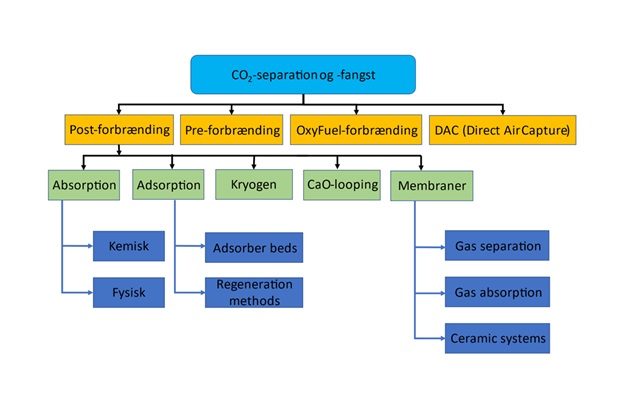The global climate crisis demands urgent and innovative solutions, with carbon emissions standing as one of the primary culprits. To combat this escalating threat, carbon capture technologies have emerged as powerful tools in reducing atmospheric CO₂.
These systems work by extracting carbon dioxide directly from industrial operations or the ambient air, then securely storing it to prevent further environmental harm. As nations strive to meet net-zero targets, understanding these technologies becomes crucial.
From direct air capture to bioenergy with carbon capture and storage (BECCS), each method offers unique advantages and challenges.
In this article, we explore the top 10 carbon capture technologies, their mechanisms, and real-world applications—highlighting their critical role in shaping a more sustainable, climate-resilient future.
Read More: Top 10 Carbon Capture Technologies and How They Work
What Are the Top 10 Carbon Capture Technologies?
As the world confronts the escalating climate crisis, carbon capture technology has emerged as a critical tool in the fight against global warming.
With rising temperatures largely driven by carbon emissions, these technologies offer practical solutions to reduce atmospheric CO₂ and help transition to a low-carbon future.
Carbon capture, utilization, and storage (CCUS) involves capturing carbon dioxide from sources like power plants, industrial facilities, or natural gas processing operations.
The captured CO₂ is then transported and securely stored—typically underground in geological formations—or repurposed for industrial use. A variety of cutting-edge approaches are being developed to capture carbon effectively and efficiently.
Below are the top 10 carbon capture technologies currently shaping the future of climate mitigation:
Direct Air Capture (DAC)
Direct Air Capture uses advanced filtration systems to extract CO₂ directly from the atmosphere. Once captured, the CO₂ is compressed for storage or converted into usable products. Though still expensive and in the early stages of development, DAC offers tremendous long-term potential for large-scale carbon removal.
Post-Combustion Capture at Power Plants
This widely implemented technology captures CO₂ emissions directly from power plant exhausts. The CO₂ is then compressed and stored underground or utilized in industrial applications. While it has limitations—such as energy intensity—it remains one of the most established methods in current use.
Enhanced Rock Weathering (ERW)
ERW accelerates the natural weathering of minerals by applying finely crushed silicate rocks, like basalt, to soil. This process captures CO₂ while improving soil fertility. ERW is cost-effective and scalable, offering a dual benefit for agriculture and carbon mitigation.
Aqueous Amine-Based CO₂ Capture
This method uses amines to absorb CO₂ from industrial emissions before it’s released. The gas is then separated, compressed, and stored. Although the technique is well-established, its high energy and operational costs pose challenges to widespread deployment.
Membrane Gas Separation
Utilizing selective membranes, this technology separates CO₂ from other gases at low temperatures and pressures. Still in experimental phases, it offers a promising, energy-efficient alternative to traditional capture methods.
Carbon Capture and Conversion
This innovative approach captures CO₂ and transforms it into valuable products like fuels, chemicals, and polymers. Although early in development, it aligns sustainability with economic value by creating marketable outputs from emissions.
Bioenergy with Carbon Capture and Storage (BECCS)
BECCS combines biomass energy production with carbon capture. The process is not only energy-generating but also carbon-negative, as it removes more CO₂ from the atmosphere than it emits. It is considered a vital component of many global net-zero strategies.
Chemical Looping
Chemical looping uses metal oxide particles to separate CO₂ during combustion. The reaction isolates CO₂ for capture while allowing fuel combustion to continue. Though still in the pilot stage, this method holds promise for fossil-fuel-heavy industries.
Cryogenic Carbon Capture (CCC)
This emerging technology cools gas streams to extremely low temperatures to isolate and capture CO₂. CCC systems can achieve high capture rates and reduce storage volume, although current applications remain limited to demonstration projects.
Nanotechnology-Based Carbon Capture
By leveraging nanomaterials like carbon nanotubes, this approach captures CO₂ more efficiently and at lower pressures than traditional methods. It consumes less energy and generates less waste, making it a potentially transformative innovation in the field.
Each of these technologies comes with distinct benefits and limitations, making them more or less suitable depending on the context—be it industrial scale, economic viability, or geographic feasibility.
However, they all share a common goal: to drastically reduce greenhouse gas emissions and help ensure a livable future for generations to come.
The Complementary Role of Carbon Capture Technologies in Combating Climate Change
Carbon capture technologies each offer unique advantages, and when combined, they provide a comprehensive approach to reducing carbon emissions across various sectors.
These technologies are vital in mitigating the global carbon footprint and are becoming increasingly crucial in the fight against climate change.Among the most widely used methods are Direct Air Capture (DAC) and carbon capture at power plants.
However, emerging technologies, such as chemical looping and nanotechnology, hold great promise for future advancements in carbon capture.
Additionally, techniques like Enhanced Rock Weathering (ERW) not only capture carbon but also offer additional benefits, such as improving soil fertility, making them a dual-purpose solution.
These technologies work synergistically to address emissions from different sources, providing a sustainable framework to meet growing energy demands while minimizing the impact of climate change.
As such, ongoing research and the widespread adoption of these technologies are essential for achieving sustainable development goals and ensuring a healthier planet for future generations.
Frequent Asked Question (FAQs)
What are carbon capture technologies?
Carbon capture technologies refer to a range of methods designed to capture carbon dioxide (CO₂) from the atmosphere or industrial processes before it is released into the environment. These technologies prevent CO₂ from contributing to global warming by either storing it underground or converting it into useful products.
How do carbon capture technologies help combat climate change?
By capturing and storing CO₂, these technologies significantly reduce the amount of greenhouse gases in the atmosphere. This helps mitigate global warming and climate change, which are driven by excessive carbon emissions from industrial activities, energy production, and transportation.
What is Direct Air Capture (DAC)?
Direct Air Capture (DAC) is a method that directly removes CO₂ from the atmosphere using large air filters. Once captured, the CO₂ can either be stored underground or repurposed for use in various industries, such as manufacturing synthetic fuels.
What is Enhanced Rock Weathering (ERW)?
Enhanced Rock Weathering (ERW) involves applying crushed silicate rocks to soil to accelerate the natural weathering process. This process captures CO₂ and helps improve soil fertility, making it a dual-purpose solution that benefits both the environment and agriculture.
What is Bioenergy with Carbon Capture and Storage (BECCS)?
BECCS combines the generation of bioenergy (from plant matter) with carbon capture. It captures the CO₂ emitted during biomass combustion and stores it underground, effectively making the process carbon-negative, as it removes more CO₂ than it emits.
What is chemical looping?
Chemical looping is a process where metal-based particles react with CO₂ to separate it from fuel during combustion. The CO₂ is then captured and stored, while the fuel continues to burn, offering a promising solution for industries that rely on fossil fuels.
Conclusion
Carbon capture technologies are integral to addressing the global climate crisis by offering viable solutions to reduce carbon emissions from various sources. Each technology, from Direct Air Capture to Enhanced Rock Weathering and Bioenergy with Carbon Capture and Storage, has its unique benefits and challenges. When combined, they provide a comprehensive and sustainable approach to mitigating climate change, supporting industries in reducing their carbon footprint, and enhancing soil and agricultural health.

